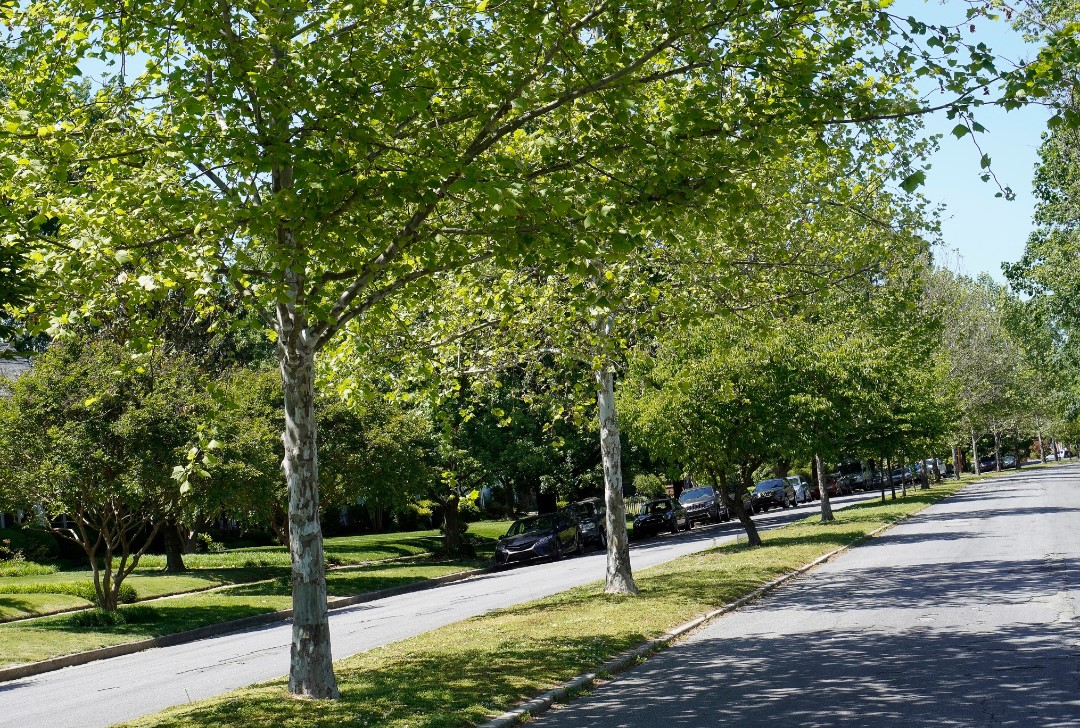Arboricultural Impact Assessment
As part of your BS5837 tree survey report, your Local Authority planning department may require an arboricultural impact assessment (AIA), which is an evaluation of your proposed development on the existing trees.
At AWA Tree Consultants, we offer expert advice on any tree issues that could influence the outcome of your planning application. Our team of arboricultural specialists has assisted thousands of development projects, both large and small, in successfully navigating the planning process.
We provide timely guidance on any design adjustments and engineering solutions, helping you achieve your development goals while gaining the support of your local authority’s Tree Officer.
How Do Our Arboricultural Impact Assessments Work?
As the foundation of the arboricultural impact assessment, we overlay your development proposals on the Tree Survey plan. This allows us to analyse all impacts on existing trees including any incursions into the Root Protection Areas (RPA) of retained trees.
From here, we can advise on the layout to ensure that your development goals are met while successfully incorporating the better value trees that will add value to the development.
The final layout is then evaluated in terms of any direct and indirect tree impacts, and we provide recommendations for any suitable mitigation where required. This information is provided in a clear illustrative plan and cross referenced within a written arboricultural impact assessment report.

What Is Included In An Arboricultural Impact Assessment?
At AWA Tree Consultants, a range of issues are investigated and evaluated within your impact assessment (as part of the BS5837 tree survey and report), these could include the following:

Direct Impacts: Pruning or Removing Trees

Indirect Impacts: Building Near Trees

Removal of Existing Structures & Hard Surfacing

Foundations

Road & Drive Construction Over Tree Roots

Ground Compaction

Installation of Underground & Over-Ground Services

Tree Shade & Future Growth Potential
Next Steps
Once the arboricultural impact assessment has been carried out, and planning permission has been granted, the LPA may condition an arboricultural method statement with a tree protection plan, which covers the following:

- Alignment of utility apparatus (including drainage), where outside the RPA or where installed using a trenchless method
- Dimensioned tree protection plan - detailed schedule of works to retained trees (e.g. access facilitation pruning)
- Detailed hard and soft landscape design
- Arboricultural site monitoring schedule
- Tree and landscape management plan
- Post-construction remedial works
- Landscape maintenance schedule
- Precise location of protective barriers and specification of protective fencing
- Extent and type of ground protection
- Locations of construction exclusion zones
- Site specific demolition and hard surface removal specifications
- Service routes
- Works access space
- Material/machinery/waste storage and permanent & temporary hard surfaces,
- Site specific construction specifications in connection with foundations, bridging, surfacing near to trees
- Access arrangements and car parking
- Details of any arboricultural supervision
Why Choose AWA Trees?
Arboricultural Impact Assessments At AWA Tree Consultants
Are you ready to ensure the success of your development project whilst protecting valuable trees? Contact our team today to schedule an arboricultural impact assessment and receive expert advice tailored to your needs.
Our team of experts is here to provide efficient and effective assessments to help you navigate the planning process smoothly. Get in touch now to start the conversation.



